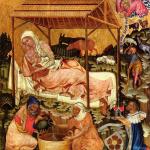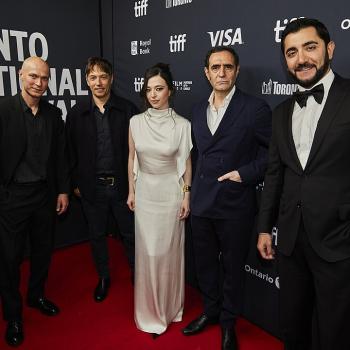There are echoes of this throughout the Orthodox world: what happened over the Cretan Council, the relationship between the Patriarch of Moscow and the government of Russia, issues between the Athonites and the Ecumenical Patriarch, and the worrying trend of more and more Alt-Right-esque converts (many of whom support Moscow as the final refuge of rational people against insanity).
And here we might see how and why this might be Orientalism. By and large, what we have are Westerners inverting the traditions of Byzantine Christianity, fetishizing them, and, in many cases, turning them into a cure all. It’s built into the very DNA of this sort of convert: “the East represents the correct politics. There they haven’t succumbed to our degenerate culture; rather, they uphold the Faith of the Fathers, of the Undivided Church. Sanctity dwells in such a place, far away from what we have allowed to happen to ourselves. By working within these traditions, we can save the West.”
Of course, in a way, this is non-sensical. Why would the West be worth saving? Does this mean some sort of Occidentalized portraits of Western Christianity (somehow separable from “Augustinian Christianity,” which is bad. One sees this rather often when such people appeal to Celtic Christianity, which, somehow was the same as Eastern Orthodoxy—not so much in truth). But, again, Heimbach’s story may be instructive (if a bit extreme, it contains the kernel that allows this sort of thing to thrive more generally, if more mutedly). After telling his story, one piece goes on:
If one chooses to ignore the inevitable complexity that exists in any nation’s history, it is easy to tell the story of Byzantium and Imperial Russia in a certain way. Here are empires that stubbornly refused to change even as the world around them sped forward, clinging instead to their ancient customs and faith. Here are empires that valiantly resisted advancing Muslim armies. Here are empires that avoided—through force of will and dogged traditionalism—both the Renaissance and Reformation, only to be brought low by forces widely demonized by the far-right. The Muslim Turks conquered the Byzantines, and the Marxist Bolsheviks slaughtered the tsar and abolished his throne. In short, it is easy to tell the story of Orthodox empires in a way that conforms ever so perfectly to the view of history that propels white nationalism. And conversion to Orthodoxy offers the wanna-be Christian soldier a real-life medieval institution, battered by Muslims and Marxists, in which to make his stand.
As an added bonus, he can defend the Catholic faith in a national church. The Orthodox communion is governed through a highly decentralized, synodical system in which 15 self-governing churches—traditionally organized along national/ethnic lines—act with autonomy. While this system of ecclesiastical governance predates by centuries modern concepts of race and nationalism, for a nationalist steeped in the rhetoric of racial separatism, it is impossible not to see a reflection of separatist beliefs.
This is not, by the way, an unusual interpretation of Orthodoxy’s system. As modern racial and nationalist ideology took root in traditionally Orthodox lands throughout the 18th and 19th centuries, plenty of nationalists saw Orthodoxy’s national division as an endorsement of their views. This lead to the condemnation of such ideas by a pan-Orthodox synod at Istanbul in 1872. There the gathered bishops declared, “We renounce, censure and condemn racism, that is racial discrimination, ethnic feuds, hatreds and dissensions within the Church of Christ, as contrary to the teaching of the Gospel and the holy canons of our blessed fathers…” (Religion Dispatches)













